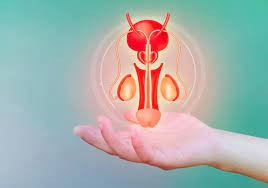Hydrocele or hydrocele is a benign pathology of the genitourinary system, usually painless, which, however, can cause pain and/or discomfort to the patient. It should be emphasized that since this is a benign pathology, its treatment is carried out only when symptoms appear. In this article, we will look at the causes of the disease, how the diagnosis is made and which treatment methods are most effective.
What is hydrocele and how does it manifest itself?
Hydrocele is characterized by the accumulation of fluid between the visceral and parietal layers of the vaginal membrane of the testicle. Moreover, this fluid may or may not be present in the peritoneal cavity. Normally, there is already a small amount of physiological fluid between these two layers, but when this amount increases significantly, it causes swelling of the scrotum and the manifestation of associated symptoms.
Hydrocele can occur at any age. Congenital hydrocele is a condition that affects newborns and children, which, unlike adults, can be the result of a failure to heal vaginal-peritoneal duct. Reactive (secondary) hydrocele - is formed as a result of inflammation of the testicle, epididymis or its membranes.
The scrotum is divided into 2 parts: right and left, separated by the scrotal septum. Therefore, hydrocele may not affect the entire scrotum, but usually only one of its two parts. If the patient has a severely swollen scrotum and has problems walking and/or performing normal daily activities, this already indicates the need for surgical intervention.
What are the causes of hydrocele?
The main causes that determine the occurrence of hydrocele are usually injuries or infections that cause inflammation of the epididymis. In these cases, the diagnosis is made clinically and confirmed after a visit to the urologist of the Bogolyuby Medical Center , which includes palpation of the scrotum. The most important diagnostic test is an ultrasound of the scrotum, which allows us to make an accurate diagnosis of hydrocele .
What does the treatment involve?
Treatment involves resection of the vaginal membrane, in particular, a midline incision is made at the level of the scrotal suture or on the scrotal hemisphere where the hydrocele is located . The layers under the skin are then opened until the parietal layer of the vaginal membrane is reached. The latter is cut, allowing excess fluid to escape. Then, the excess vaginal membrane is resected. Finally, a hemostatic suture is applied. These are absorbable sutures that remain inside. After the operation is completed, the testicle is placed in the scrotum, hemostasis is carefully assessed, and the fleshy part of the scrotum and skin are sutured layer by layer.
What does the postoperative period consist of?
For 48 hours after surgery, the patient should remain in bed with periodic local application of an ice pack. Rest should be observed for one week and strenuous physical activity, sexual activity or sports should be avoided. You can shower the next day, and bathe at least after a couple of weeks. At first, the testicle will seem enlarged and painful. These are normal postoperative results. Everything returns to normal in about 1 or 2 months, and in more complex cases - up to 6 months.
How to prevent hydrocele?
To do this, it is necessary to prevent its causes:
• use a condom to protect yourself from sexually transmitted diseases;
• pay attention to your immune status (eat well, lead an active lifestyle);
• Try to avoid conditions that cause pelvic veins to become engorged (sit less).
And if there are any suspicions or doubts, consult a urologist. In the early stages of hydrocele, surgery is performed with minimal trauma and with the best prognosis for full recovery.

















